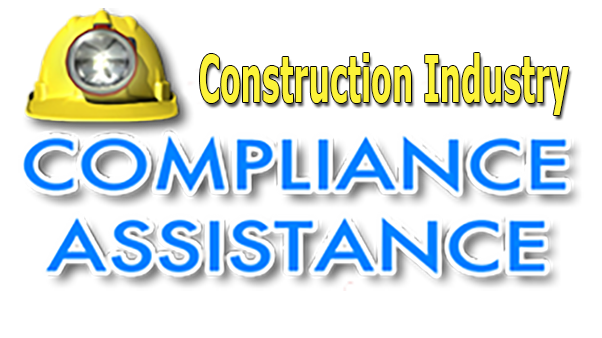
Back to Main Page ... Lead Renovation, Repair and Painting (RRP) Rule
RRP Rule: Training and Certification
Any individual or business paid to perform work that disturbs lead-based paint or presumed lead-based paint in housing or child-occupied facilities built before 1978 must be certified. This includes all firms, even sole proprietorships. In addition, an individual must be assigned to each job who is trained and a certified renovator. The firm and the assigned certified renovator are responsible for ensuring the RRP Rule requirements are followed.
The certification requirements apply to:
- Residential rental property owners/managers
- General contractors
- Special trade contractors, including
- Painters
- Plumbers
- Carpenters
- Electricians
Firms cannot advertise or perform renovation activities covered by the regulation in homes or child-occupied facilities built before 1978 without firm certification. Any activity performed for compensation that disturbs lead-based paint or presumed lead-based paint in pre-1978 housing and child-occupied facilities is covered, including:
- Remodeling and repair/maintenance
- Electrical work
- Plumbing
- Painting preparation
- Carpentry
- Window replacement
How a firm gets certified:
Firms must apply to EPA or an authorized state/tribe for firm certification before performing renovations or dust sampling. If your firm is working in these states: Alabama, Delaware, Georgia, Iowa, Kansas, Massachusetts, Mississippi, North Carolina, Oklahoma, Oregon, Rhode Island, Utah, Washington, and Wisconsin, you should follow the link provided for more information about their training and certification requirements. If you work in more than one state, you may need both EPA and state/tribal certifications. To apply for EPA certification, a firm must submit a completed application and fee to EPA online. EPA RRP firm certifications are good for five years. For more information, see https://www.epa.gov/lead/renovation-repair-and-painting-program-firm-certification. Apply for or update your certification at https://www.epa.gov/lead/getcertified.
Before the five-year term of your certification is up, you will need reapply for your certification. In 2016, EPA finalized revisions to the Lead-based Paint program to reduce burden and costs to industry and clarify language for training providers. A key component of the final rule allows on-line training for every other recertification. Renovators who take the online training will be certified for three years; renovators who take the hands-on training will be certified for five years. Read more.
The certified firms performing renovations must ensure that:
- All individuals performing activities that disturb painted surfaces on behalf of the firm are either certified renovators or have been trained by a certified renovator.
- A certified renovator is assigned to each renovation and performs all the certified renovator responsibilities (see next paragraph).
- All renovations performed by the firm are performed in accordance with the work practice standards of the Lead-Based Paint Renovation, Repair, and Painting Program.
- Pre-renovation education and lead pamphlet distribution requirements of the Lead-Based Paint Renovation, Repair, and Painting Program are performed.
- The program's recordkeeping requirements are met.
How a renovator gets trained
A renovator who completes an initial renovator training course accredited by EPA or an EPA authorized state program is certified. See more information about training at https://www.epa.gov/lead/renovation-repair-and-painting-program-renovator-training. Find information about training providers at https://www.epa.gov/lead/renovation-repair-and-painting-program-training-providers. You can also search for a training provider in your area at https://cfpub.epa.gov/flpp/pub/index.cfm?do=main.trainingSearch.
Before a renovators training expires, the renovator will need to complete refresher training from a trainer accredited by EPA or an authorized state program. See details at https://www.epa.gov/lead/renovation-repair-and-painting-program-renovator-training.
The certified renovator on each job is responsible for ensuring overall compliance with the RRP Rule requirements for lead-safe work practices. The certified renovator must:- Provide on-the-job training to other workers (if they have not taken the certified renovator training course) on the lead safe work practices to be used in performing their assigned tasks.
- Be physically present at the work site when warning signs are posted, while the work-area containment is being established, and while the work-area cleaning is performed.
- Regularly direct the work being performed by others to ensure that the work practices are being followed, including maintaining the integrity of the containment barriers and ensuring that dust or debris does not spread beyond the work area.
- If paint testing is requested by the customer, use an EPA recognized test kit or collect paint chip samples, submit them to an EPA-recognized laboratory, and obtain test results from the laboratory. Remember, you must assume lead-based paint is present for all pre-1978 housing and buildings, and follow all the RRP Rule requirements, unless this testing determines all affected areas are lead-free. See the recordkeeping requirements for more information about testing.
- Be available, either on-site or by telephone, at all times when renovations are being conducted.
- Perform project cleaning verifications.
- Have copies of their initial course completion certificate and their most recent refresher course completion certificate at each job site.
- Prepare required records.
You can find the regulatory language for the RRP Rule firm certification requirements at 40 CFR 745.89. You can find the regulatory language for the RRP Rule certified renovator requirements at 40 CFR 745.90.
